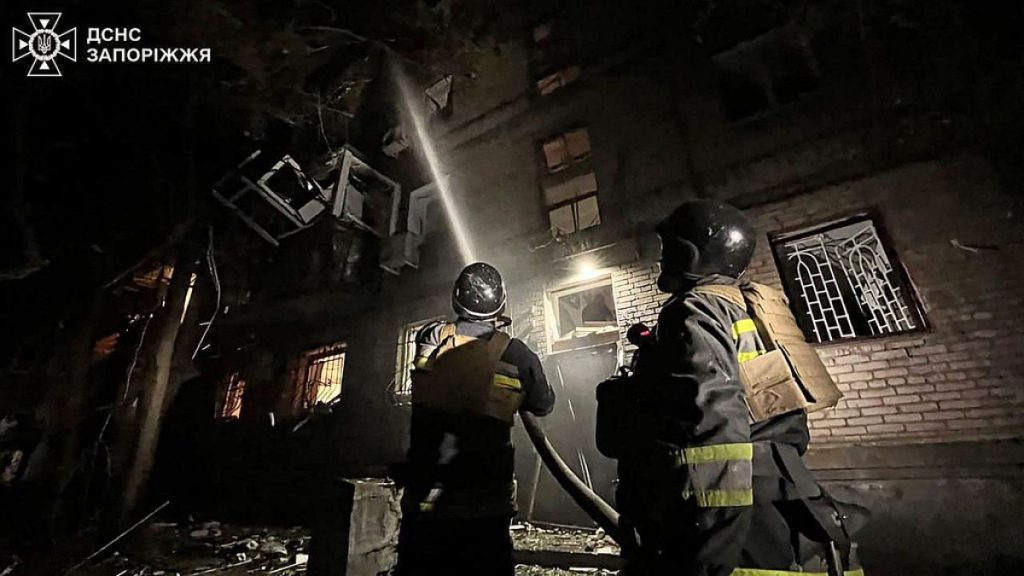Russia continued its airstrikes on southeastern Ukraine, targeting the city of Zaporizhzhia and causing at least seven injuries and one fatality. The attacks in Zaporizhzhia involved glide bombs, which caused significant damage to buildings and homes. In addition, the city of Kupiansk in Kharkiv Oblast was also targeted, resulting in one death and one injury. Kharkiv city, the regional capital, experienced a Russian glide bomb attack that killed three people and injured 28 more. Russia also released footage showing air strikes on Ukrainian troops and military equipment in the Kursk region, where Ukrainian forces had launched an incursion in an effort to divert Russian troops from other areas.
Ukrainian forces had previously launched an incursion into the Kursk region to ease pressure in Ukraine’s northeast and force Russia to divert its troops. Despite Russian efforts to push them back, Ukrainian forces managed to hold ground in Kursk, causing Russia to focus its attacks on Ukrainian troops, armoured vehicles, and military equipment in the region. The full-scale invasion of Ukraine by Russia began in February 2022, leading to a war of attrition characterized by bombings in towns and cities along the border. Moscow has been attempting to breach Ukrainian defences at various points along a 1,000-kilometre front line, with ongoing airstrikes and attacks on civilian areas causing casualties and significant damage.
The continued Russian airstrikes and attacks in southeastern Ukraine have resulted in multiple casualties and extensive damage to infrastructure and homes. The use of glide bombs and other advanced weaponry has raised concerns about the escalating violence and humanitarian impact of the conflict. Ukrainian forces have been facing intense pressure from Russian military forces, who are attempting to regain control of territories and push back Ukrainian incursions. As the conflict unfolds, both sides are engaged in a battle for strategic positions and control over key territories, leading to heightened tensions and violence in the region.
The conflict in Ukraine has fueled international condemnation of Russia’s actions, with many countries and organizations calling for an end to the violence and a peaceful resolution to the crisis. The targeting of civilian areas and infrastructure has been met with widespread criticism, as the humanitarian toll of the conflict continues to mount. Efforts to negotiate a ceasefire and facilitate talks between the warring parties have faced challenges, as both sides remain entrenched in their positions and determined to achieve their objectives through military means. The impact of the conflict on the civilian population, including displaced persons and refugees, has raised urgent concerns about the need for humanitarian aid and assistance.
The situation in Ukraine remains volatile and unpredictable, with ongoing clashes and violence threatening the lives and livelihoods of civilians on both sides of the conflict. The escalating tensions and military actions by Russia have led to a humanitarian crisis in Ukraine, with widespread displacement, casualties, and destruction of infrastructure. The international community has a critical role to play in addressing the crisis and supporting efforts to de-escalate the conflict, protect civilians, and uphold international law. As the conflict continues to unfold, the need for a peaceful resolution and diplomatic dialogue becomes increasingly urgent, as further escalation could have devastating consequences for the people of Ukraine and the wider region.


